Until the early 18th century, this was officially called The St George Inn, after the patron saint of England. It seems that the ‘saint’ part of the name was dropped after King George acceded to the throne in 1714. During the 1970s, the old name of the inn was recalled by the hanging sign on the front of the building, depicting Saint George and the dragon.
Text about The George Hotel.
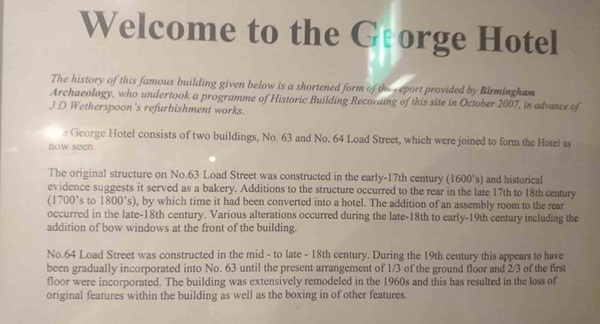
The text reads: The history of this famous building given below is a shortened form of the report provided by Birmingham Archaeology, who undertook a programme of Historic Building Recording of this site in October 2007, in advance of J D Wetherspoon’s refurbishment works.
The George Hotel consists of two buildings, No.63 and No.64 Load Street, which were joined to form the hotel as now seen.
The original structure on No.63 Load Street was constructed in the early 17th century (1600s) and historical evidence suggests it served as a bakery. Additions to the structure occurred to the rear in the late 17th to 18th century (1700s to 1800s), by which time it had been converted into a hotel. The addition of an assembly room to the rear occurred in the late 18th century. Various alterations occurred during the late 18th to early 19th century including the addition of bow windows at the front of the building.
No.64 Load Street was constructed in the mid to late 18th century. During the 19th century this appears to have been gradually incorporated into No.63 until the present arrangement of 1/3 of the ground floor and 2/3 of the first floor were incorporated. The building was extensively remodelled in the 1960s and this has resulted in the loss of original features within the building as well as the boxing in of other features.
Photographs and text about The George Hotel.
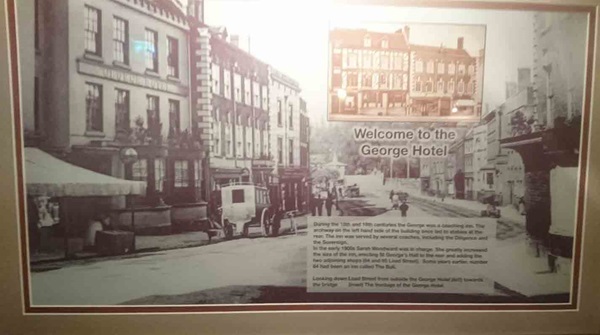
The text reads: During the 18th and 19th centuries The George was a coaching inn. The archway on the left hand side of the building once led to stables at the rear. The inn was served by several coaches, including the Diligence and the Sovereign.
In the early 1900s Sarah Woodward was in charge. She greatly increased the size of the inn, erecting St George’s Hall to the rear and adding the two adjoining shops (64 and 65 Load Street). Some years earlier, number 64 had been an inn called The Bull.
Inset: Looking down Load Street from outside the George Hotel (left) towards the bridge.
Illustrations, prints and text about saints and kings.
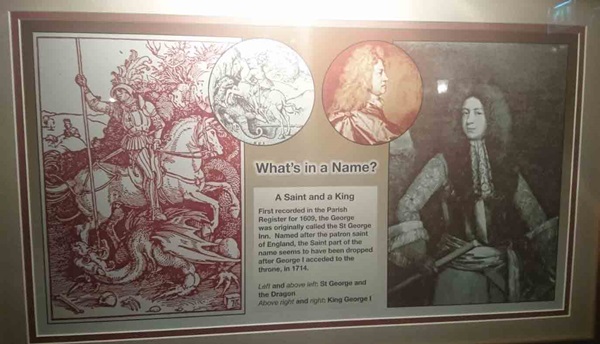
The text reads: First recorded in the Parish Register for 1609, The George was originally called The St George Inn. Named after the patron saint of England, the saint part of the name seems to have been dropped after George I acceded to the throne, in 1714.
Left and above left: St George and the dragon
Above right and right: King George I.
A plaque dedicated to Sarah Elizabeth Woodward.
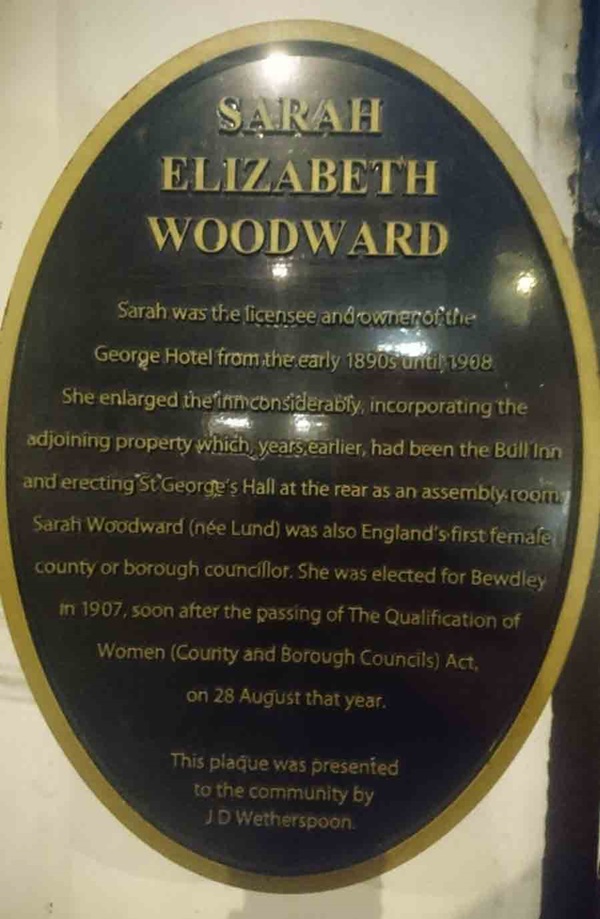
The plaque reads: Sarah was the licensee and owner of The George Hotel from the early 1890s until 1908. She enlarged the inn considerably, incorporating the adjoining property which years earlier, had been The Bull Inn and erecting St George’s Hall at the rear as an assembly room. Sarah Woodward (lee Nund) was also England’s first female county or borough councillor. She was elected for Bewdley in 1907, soon after the passing of The Qualification of Women (Country and Borough Councils) Act, on 28 August that year.
An illustration and text about Bewdley.
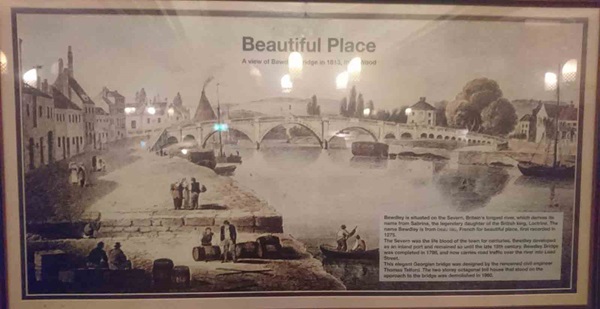
The text reads: Bewdley is situated on the Severn, Britain’s longest river, which derives its name from Sabrina, the legendary daughter of the British king, Loctrine. The name Bewdley is from beau lieu, French for beautiful place, first recorded in 1275.
The Severn was the life blood of the town for centuries. Bewdley developed as an inland port and remained so until the late 18th century. Bewdley Bridge was completed in 1798, and now carries road traffic over the river into Load Street.
This elegant Georgian bridge was designed by the renowned civil engineer Thomas Telford. The two storey octagonal toll house that stood on the approach to the bridge was demolished in 1960.
External photograph of the building – main entrance.
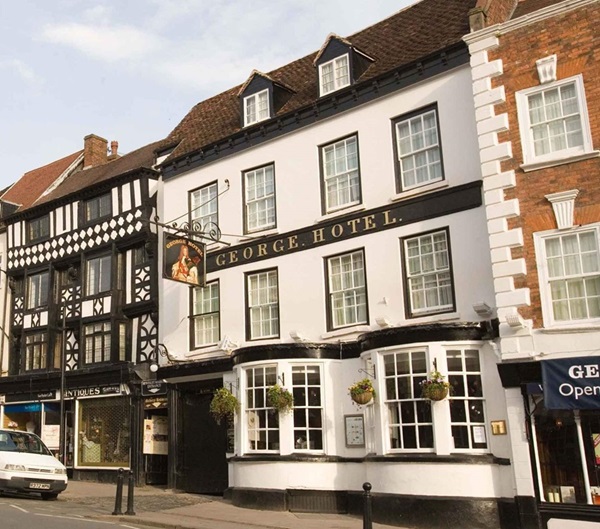
If you have information on the history of this pub, then we’d like you to share it with us. Please e-mail all information to: pubhistories@jdwetherspoon.co.uk